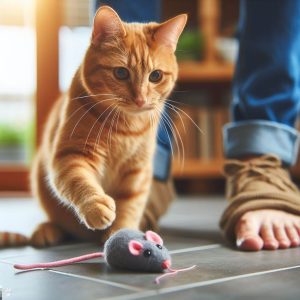Got a new kitten at home and wondering how much you should be feeding the little furball? Figuring out the right feeding amount for kittens can be confusing, especially for first-time cat owners. Kittens have very specific nutritional needs because they grow incredibly fast during their first year.
Feeding kittens the right amount of food is crucial for their health and development. Underfeeding can lead to malnutrition, while overfeeding can cause obesity and other problems. This comprehensive guide will teach you exactly how much to feed kittens at every stage as they go from tiny newborns to adulthood.
Key Things to Know About Feeding Kittens
Here are some key pointers to keep in mind when feeding kittens:
- Kittens need several small meals. Their tiny stomachs can only hold a small amount at a time so they need to eat frequently.
- Amounts needed change quickly as kittens grow. You need to monitor and adjust amounts regularly.
- Feed a high-quality kitten formula. It has the proper nutrition balance for growth.
- Use the label guidelines as a starting point. Every kitten has different needs.
- Weigh kittens weekly. This allows you to adjust amounts as needed.
- Provide constant access to fresh water. Kittens need to stay hydrated.
- Consult your vet if uncertain. They can help determine proper diet and amounts.
Now let’s look at the specific feeding recommendations based on a kitten’s age and weight.
Feeding Chart by Age
Here is a quick overview of how kitten feeding changes from newborn through adulthood:
| Age | Frequency | Food Type | Amount per day |
|---|---|---|---|
| 0-4 weeks | Every 2-4 hours | Mother’s milk or kitten formula only | By weight – consult vet |
| 3-6 weeks | 4-6 small meals | Weaning onto moist solid foods | 1-3 oz per meal |
| 6-8 weeks | 4-6 small meals | High-protein moistened kitten food | 3-5 oz per meal |
| 3-6 months | 3-4 meals | Kitten wet + dry food | 5.5-8 oz wet, 1/3-1/2 cup dry |
| 6-12 months | 3 meals | Kitten wet + dry food | 5.5-8 oz wet, 1/3-1/2 cup dry |
| 12+ months | 1-2 meals | Adult cat food | Per label guidelines |
Amounts shown are general recommendations only. Adjust up or down based on each kitten’s needs.
Newborn Kittens (0-4 Weeks)
For the first month of life, newborn kittens are fully dependent on their mother’s milk. They should nurse frequently, every 1-2 hours. The mother cat will take care of stimulating urination and defecation in her kittens by licking their bottoms.
Do not attempt to feed newborn kittens yourself unless absolutely necessary. The mother’s milk provides complete, perfectly balanced nutrition and supports their underdeveloped immune system.
If orphaned newborns must be hand-fed, use a kitten milk replacement formula specifically designed for their needs. Feed with a bottle or syringe every 2-4 hours. The amount per feeding should be based on their body weight. Talk to your vet for guidance.
Transitioning Kittens (3-6 Weeks)
Around 3-4 weeks of age, as their teeth start coming in, kittens show interest in solid food and begin sampling their mother’s portions. Keep moistened kitten food available so they can start trying small amounts several times a day.
By 6 weeks, kittens should be eating solid food regularly. Gradually decrease bottle or nursing frequency as they get more nutrition from solid foods.
Weaning Kittens (6-8 Weeks)
From 6 to 8 weeks, kittens shift from nursing to getting full nutrition from solid food. Here are some tips for this transition period:
- Feed 4-6 small meals spaced evenly throughout the day. Kittens have tiny stomachs.
- Provide moistened, softened kitten food to make it easier to chew and digest. Mix in formula or KMR if needed.
- Offer a high-protein kitten formula dry food for free-feeding. Leave a bowl available at all times.
- Try different textures – minced, pâté, mousse etc. Kittens need variety.
- Keep introducing new proteins and flavors to develop palate.
- Canned food provides more moisture compared to dry. Aim for about 25% calories from wet food.
- Ensure fresh, clean water is always available. Kittens need hydration.
By 8 weeks, kittens should be completely weaned off milk/formula and eating only solid foods. Provide just kitten food – adult cat food is deficient in key nutrients for growth.
Feeding Kittens 3-6 Months Old
The 3-6 month age range is a crucial growth period. Kittens are very active and burn a lot of calories. Here are feeding tips for this stage:
How Often to Feed
- Feed 3-4 times per day. Their stomach capacity is still small.
- Spacing out meals avoids over-stuffing and indigestion.
- Time meals around playing/napping cycles so they can digest.
- Leave dry food available for self-feeding if you’ll be away long hours.
How Much to Feed by Weight
Here are the recommended amounts of wet and dry kitten food to feed kittens 3-6 months old based on their weight:
| Weight | Wet per day | Dry per day |
|---|---|---|
| 2-3 lbs | 5.5 – 6 oz | 1/3 cup |
| 4-5 lbs | 6.5 – 7 oz | 1/3 – 1/2 cup |
| 6-8 lbs | 7 – 8 oz | 1/2 cup |
Calculate about 20-30 calories per pound per day. For example, a 4 lb kitten needs 80-120 calories daily. Adjust amounts based on each kitten’s body condition and weight gain.
What to Feed
- Continue feeding only high-quality kitten formula, wet and dry.
- Calculate the split between wet and dry food. Around 25-30% of daily calories should come from wet food.
- Offer a variety of protein sources and flavors. Rotation helps avoid food sensitivities.
- Mix in a small amount of water into dry kibble to soften it.
- Avoid “people food”. Kittens need proper nutrients. Some human foods are toxic for cats.
Feeding Kittens 6-12 Months Old
By 6 months, kitten feeding starts transitioning to more scheduled meals versus free-feeding. Here are some pointers for this age range:
- Feed 3 scheduled meals per day of wet and dry food.
- Gradually reduce calories as growth starts slowing – about 15-20 calories per pound daily for a 6-12 month kitten.
- Weigh monthly and adjust amounts based on kitten’s condition. They should not become overweight.
- Provide constant access to fresh, clean drinking water.
- Continue feeding kitten formula until 12 months old for proper nutrition.
- Around 8-10 months you can introduce adult cat food. Mix it in gradually over 2-4 weeks as you transition fully to adult food at 12 months.
Signs Your Kitten Is Not Getting Proper Nutrition
Watch for these signs that your kitten may not be getting adequate nutrition:
- Minimal weight gain or weight loss
- Lethargy, weakness, trembling
- Dry or dull coat
- Excessive meowing and food-seeking behaviors
- Chewing on non-food objects
- Poor wound healing
- Increased susceptibility to illness
- Stunted growth
- Diarrhea or vomiting
- Swollen belly area
If you notice any of these, contact your vet right away. The kitten may need diet adjustments, nutritional supplements, or treatment for an underlying health issue affecting their ability to thrive. Providing proper nutrition from the start prevents complications down the road.
Things to Avoid When Feeding Kittens
Here are some important nutritional DON’Ts when feeding kittens:
- No cow’s milk. Kittens are lactose intolerant and get diarrhea. Use kitten replacement formula only.
- Avoid overfeeding. This can lead to diarrhea, vomiting and obesity. Stick to recommended amounts.
- No added supplements. Kitten foods are complete and balanced already. Too much calcium, vitamins etc can cause problems.
- No “extras”. Things like milk, eggs, or table scraps throw off the nutritional balance. Stick to the kitten’s regular diet.
- No sudden food changes. Always transition gradually over 5-7 days to avoid digestive upset.
- No cheap low-quality foods. These often lack adequate protein and nutrients. Spend a little more for quality kitten formula.
Transitioning From Kitten to Adult Food
Make a gradual transition from kitten to adult cat food between 10-12 months of age. Here’s how:
- Slowly mix in more adult food over 2-4 weeks, starting with 25% adult food and 75% kitten food.
- Gradually increase the adult food ratio until fully switched after 1 month.
- Introduce new protein sources and flavors in the adult food one at a time.
- If stool becomes loose, slow transition and allow more time.
- For cats under 10 lbs, use a “junior” formula designed for small/medium breeds.
- Large breed cats over 10 lbs can switch to regular adult cat food.
By 12 months, your kitten is considered an adult cat and their growth has slowed. Feeding adult cat food prevents obesity. Follow label feeding guides for calories and meal sizes. Adult cats only need 1-2 meals per day versus a kitten’s 3-4 daily feedings.
Tips for Choosing the Best Kitten Food
Not all kitten foods are created equal. Here’s how to pick the best formula:
- Look for “Growth” or “Kitten” labeling. Foods designed specifically for kittens contain optimal nutrition for this life stage.
- Aim for at least 30% protein. Kittens need more protein for muscle development.
- Check for omega fatty acids. These promote healthy skin, coat, immune system and brain growth.
- Avoid artificial additives. Look for all natural ingredients. Steer clear of artificial colors, flavors and preservatives.
- Seek out known reputable brands. Trusted cat food companies adhere to higher standards and quality control.
- Read reviews online to learn what other kitten owners are saying about a particular brand or formula. This can help determine quality.
- Consult your vet for advice about the best kitten food options for your specific pet.
While premium or “natural” kitten foods cost more, they are worth it for proper nutrition during this critical development window. Paying a little extra now avoids health issues down the road.
Monitor Your Kitten’s Growth
Tracking your kitten’s development offers peace of mind that feeding is on track. Here’s what to watch for:
- Rapid weight gain in the first few months, then slowing by 6-8 months of age. Weigh weekly and monitor rate of gain.
- Proper weight for size. Use growth charts to ensure they stay proportional.
- Shiny coat and clear eyes. Signs of good health and nutrition.
- High energy levels and increased activity and playfulness. Kittens should sleep less as they get older.
- Strong teeth and bones. Check for normal bite alignment.
- Healthy stool. Should be well-formed, not loose.
Bring any concerns about growth and development to your veterinarian promptly. Early intervention maximizes your kitten’s chances of maturing into a healthy adult cat.
Feeding Kittens Requires Patience and Flexibility
Kittens grow rapidly, so their nutritional needs seem to change constantly those first 12 months. The key is staying flexible – be prepared to tweak amounts and frequencies often based on the kitten’s cues.
Patience is also required, since kittens can be fussy eaters. Offer a variety of textures and flavors until you find what your kitten likes best. Never add supplements or “extras” which can do more harm than good despite best intentions.
With some attentiveness and these feeding tips, you can ensure your kitten gets optimal daily nutrition to grow into a happy, healthy cat! Just focus on providing frequent small meals, weigh regularly, use proper kitten formula, and work closely with your veterinarian.



